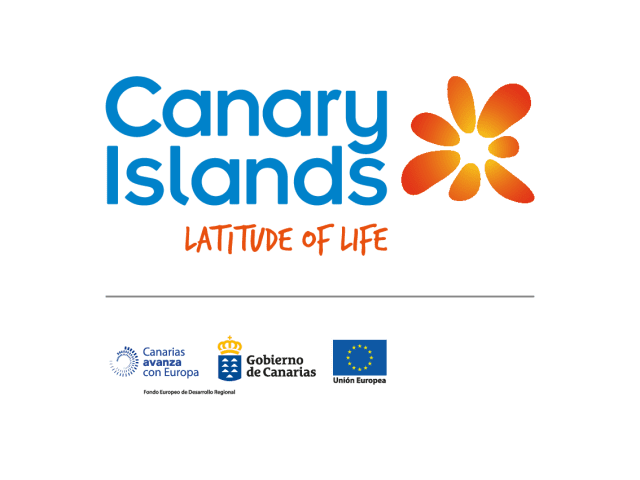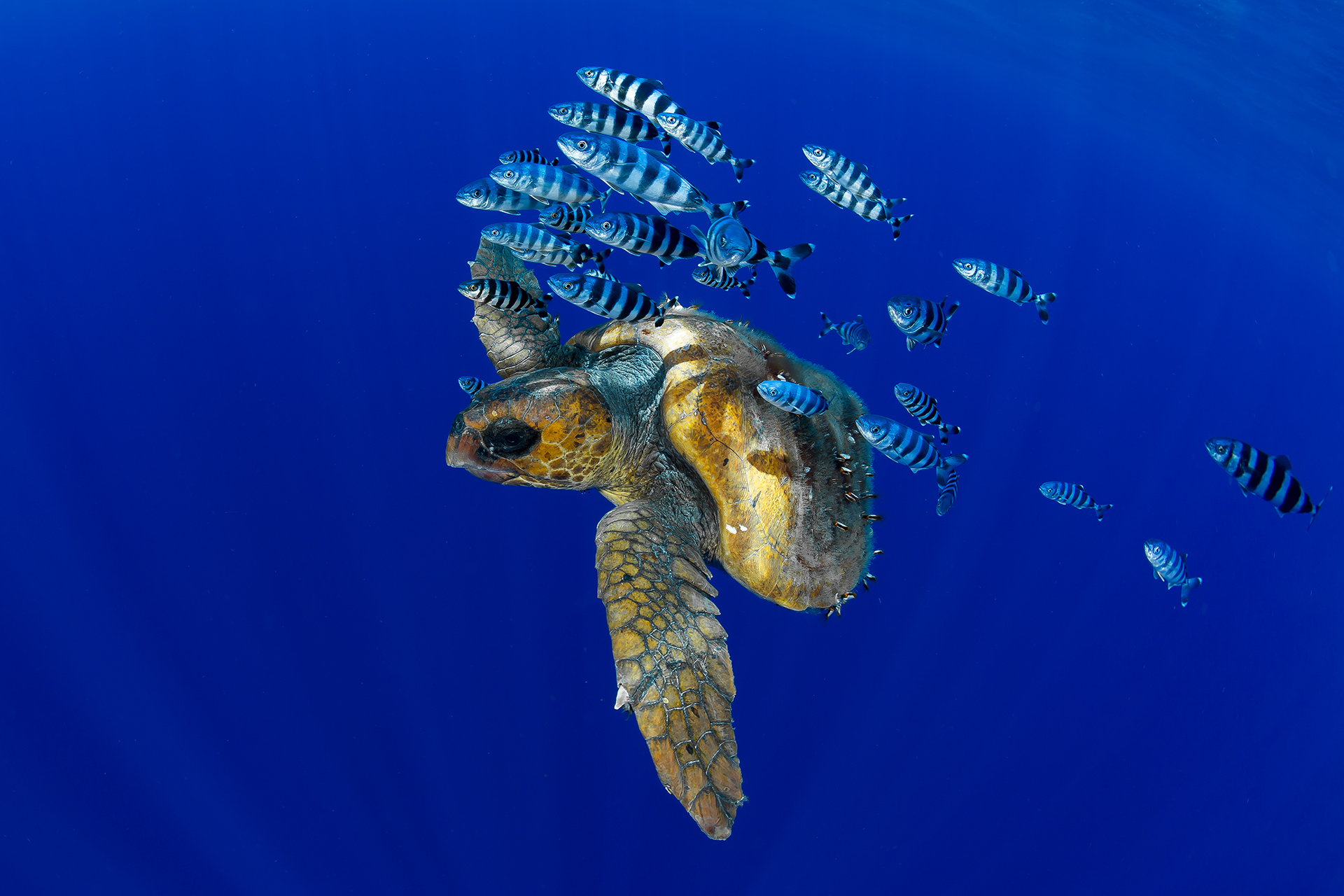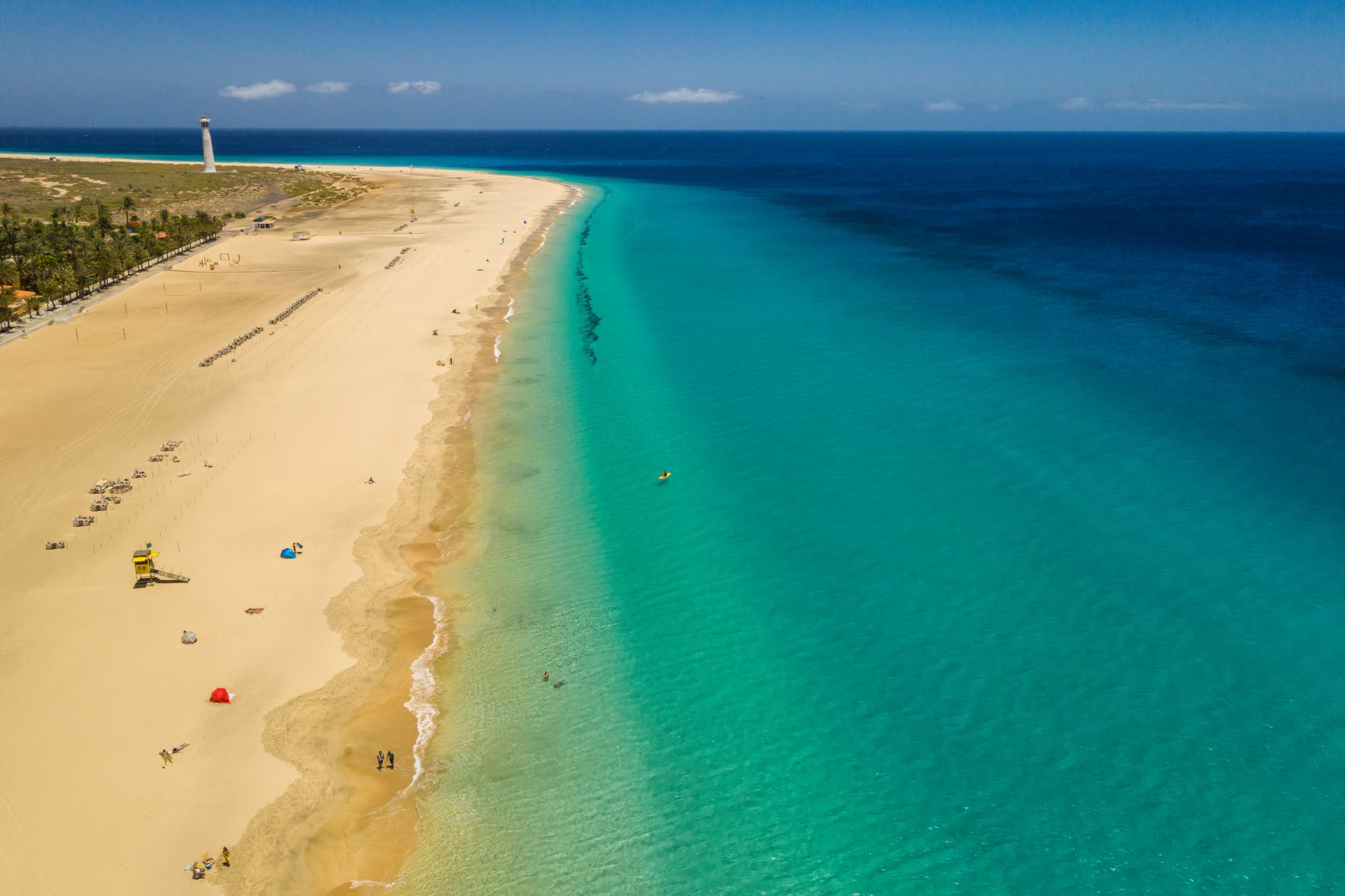To celebrate World Oceans Day on 8th of June 2021, discover the more than 500 unique species found in the waters of the Canary Islands, living in one of the richest marine floras on the planet.
The marine area of the Canary Islands looks and feels like nowhere else in Europe, not only because of its amazing underwater visibility, but also because it is home to over 500 unique marine species.
The location of the Canary Islands has made the archipelago a haven for marine life. Here, the North Atlantic current converges with the currents of the Southern Hemisphere as well as the Canary Islands’ own currents. The varying temperatures of the oceans mean that these waters do not mix but draw a line in the sea, visible from a boat in areas around the island of La Gomera. This convergence provides the perfect conditions for a wealth of marine life in the Canary Islands which, combined with the incredible ocean visibility, make the Canary Islands one of the best destinations in Europe for scuba diving, snorkeling, whale watching and recreational fishing.
There are three Marine Reserves of Fishing Interest protected for their ecological value to facilitate the recovery of resources and guarantee the sustainability of the oceans. The Reserves are found in La Palma, El Hierro and La Graciosa. The incredible water visibility allows divers to view the biodiversity of the archipelago’s seabed. The oceans of the Canary Islands are home to a plethora of marine species, including turtles, tuna and sharks, all of which have been protected by artisanal fishing for centuries.
The quality of the marine area surrounding the Canary Islands was internationally recognized in 2021 when Tenerife’s West Coast was declared a UNESCO World Heritage Site for cetacean conservation, making it the first Whale Heritage area in Europe with the Responsible Watching certification, a distinction granted by the World Cetacean Alliance. This recognition highlights the value of the natural resource of the archipelago’s coasts and encourages the responsible observation of the area’s dolphins and whales. The coastal strip between Tenerife and La Gomera is a sanctuary for cetaceans, with a colony of more than 500 pilot whales living in the 22km marine arm which separates Faro de Rasca and Punta de Teno.
Oceana, the international organisation dedicated to ocean conservation, has conducted a study on the biodiversity of the seabed of the Canary Islands in which more than 500 different species have been recorded. The archipelago is described as a haven for sharks and rays, such as the Norwegian stingray, which had been considered extinct by scientists until it was seen in an area near Fuerteventura in 2009.
Spectacular corals, fields of crystal sponges, armored fish, white octopus, pyramid conch and giant oyster were all sighted for the first time around in the Canary Islands. The orange roughy, which can live up to 70 years, and is considered one of the species with the most difficult reproduction, has also been discovered in the archipelago’s marine area.
Gemma Lago, dive instructor at Pura Vida Lanzarote Diving, was searching for a place in Europe where she could live and practice diving regularly and decided on the Canary Islands due to its incredible marine life.
Gemma explains “In this archipelago you can truly enjoy the richness of Europe’s marine species as it is the only place that has the visibility to appreciate it due to the quality of its waters. Its volcanic seabed offers caves and wrecks with a lot of history, which are very impressive for diving”.
Gemma has found the Canary Islands an amazing place for diving and points out, “Because of the clarity of the water, the few waves on the shore, you can enter the sea from the sandy beaches, making it really easy to go diving”.
“The ocean is my family, and we fishermen know that it is unique,” says Francisco Martín Acevedo, manager of Elyman, a well-established fishing store in Tenerife. When explaining why recreational fishing enthusiasts from all over the world come to Tenerife, Francisco Martín describes the oceans of the Canary Islands as “comparable to Hawaii”. Francisco Martín adds, “We are an international benchmark for the capture and release of this sport, and we have legislated very well.”
Francisco Martín explains, “Artisanal fishing is a safeguard of the marine ecosystem and we believe it can protect the world’s oceans”. There are ancient sites in Gran Canaria where hooks made of bone and spheroid type stones with grooves have been found, which may have been used as weights or sinkers for fishing. These traditional arts are still used today in the fishing with little technological development, practiced in all the islands, with a fishing fleet of small boats.
Artisanal fisherman in the Canary Islands are careful to operate close to the coast so as not to disturb marine species. “The modern fisherman is very aware of the need to take care of the oceans. We respect the oceans because the sea always returns,” explains Francisco Martín.
It’s estimated that 50% of the oxygen we breathe comes from marine flora of the oceans, highlighting the importance of ocean conservation efforts across the world. The Canary Islands is home to many species that have completely disappeared elsewhere on the planet. They are found in the ‘sebadales’, the seagrass beds of the beaches of Gran Canaria, Lanzarote and Fuerteventura; or in the dark, volcanic seabeds of La Palma, La Gomera and El Hierro; as well as the sandy seabed of Tenerife.
IMAGES: https://www.dropbox.com/sh/ecw3o4acmgaapvc/AADFJwDyhgdXydWlpc4QkP9Na?dl=0
For more information on the Canary Islands please visit www.hellocanaryislands.com
Learn more about surfing and other sports in the Canary Islands on the TravelMedia.ie YouTube channel.
ENDS
For more information on the Canary Islands, please contact Niamh Waters niamh@travelmedia.ie



